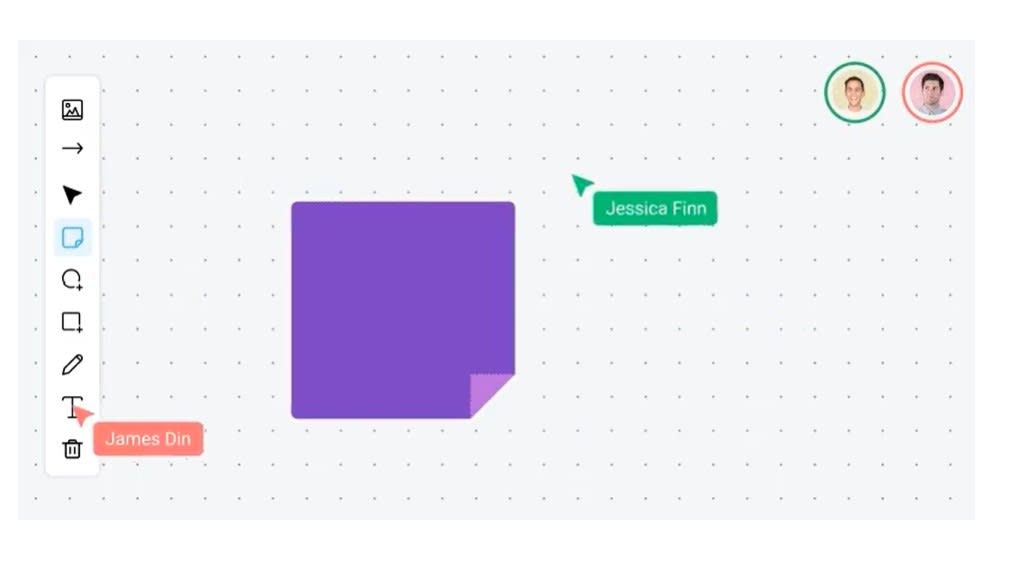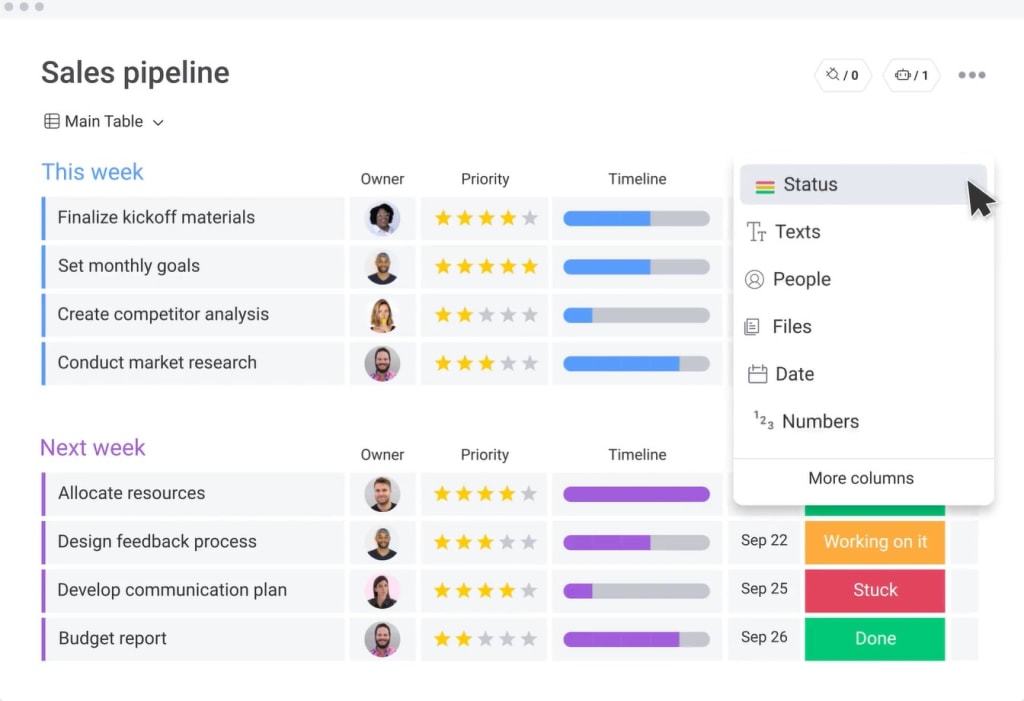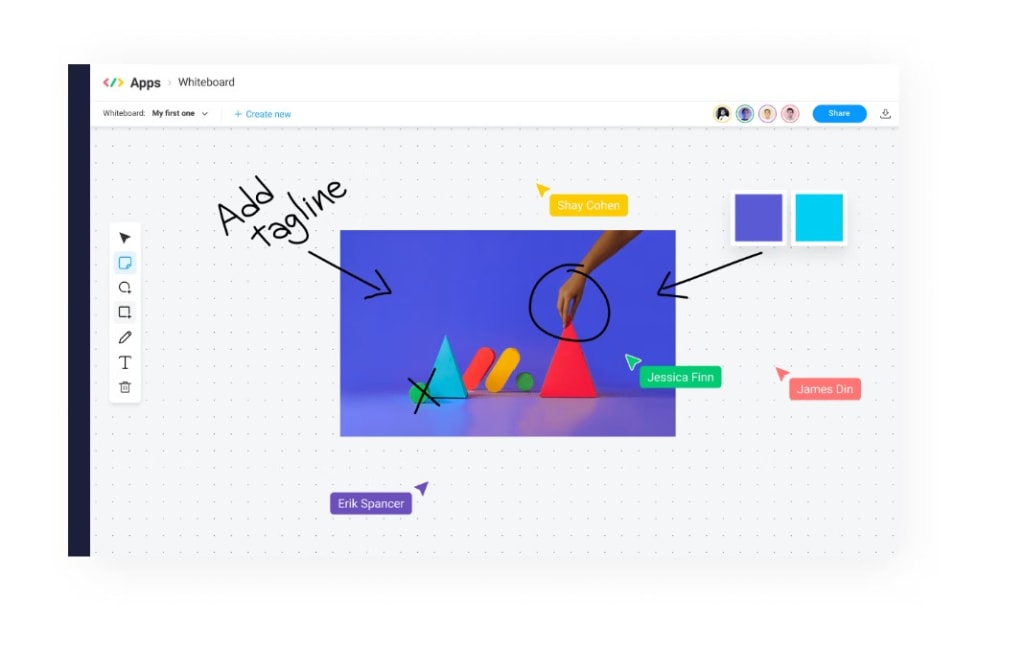Modern-day consumers are a fickle bunch. Before committing to a purchase, we go through 56 different touch points and are prone to popping items in our shopping cart without ever checking out. Shopping cart abandonment is as high as 69.99% for eCommerce businesses, which sounds like a waste of time, but it’s all part of the customer journey.
This guide will delve into customer journey maps, including how sales and marketing teams can benefit from making sense of this information and how to collect and present the data using monday.com.
What is a customer journey map?
Customer journeys aren’t linear. They’re a mix of research, comparison-shopping, and price-checking that leads to an eventual purchase.This process varies depending on the item they’re purchasing, the customer’s mood, how quickly they want to buy, and numerous other factors that make up their unique customer journey. Sales and marketing teams can visually document these elements using a customer journey map to identify common pain points and develop strategies to improve the customer experience.
As an example, business consultant Barry Hott tracked his mother’s buying behavior and noticed eight specific stages before she purchased a gift.

Barry’s mother:
- Received a link for a gift suggestion from a family member
- Added the product link to the shopping cart
- Realized she was $3 short of free shipping
- Tried to find another product to cross the free shipping threshold
- Failed to find another product but received a pop-up offer for a 10% discount while still shopping
- Entered her email address to receive the discount
- Checked her email but was distracted by other inbox messages
- Eventually found the discount code and later completed the purchase.
What are the typical stages of a customer journey?
Although each customer journey is different, expect each person to go through these basic stages.
- Awareness: acknowledging they have a goal or problem and seeking educational material to solve it. This might include reading a social media post or scrolling through the list of benefits in an advertisement.
- Consideration: consumers may compare a brand or product with competitors, discuss their purchasing idea with friends or family, and even reach out directly to sales teams for advice.
- Decision-making: the consumer has a more serious intent to purchase at this stage and may request a quote or a product demo
- Retention: during post-sales, marketers may tempt consumers with a loyalty program.
- Advocacy: satisfied customers will proudly spread the word about a brand’s product or service.
What are the benefits of customer journey mapping?
Mapping out the complexities of a customer buying process yields some important insights for marketers. They can:
1. Empathize with the customer experience
Jumping into your customers’ shoes helps you understand what motivates them, the roadblocks they experience, and what finally pushes them across the purchase finish line. These insights also allow you to minimize customer frustrations, like not qualifying for free shipping or the product page not displaying correctly on a smartphone.
2. Recognize complex buyer journeys
Purchasing decision complexity steps up a notch with B2B audiences involving multiple decision-makers. Mapping out these intricacies to identify unique customer segments and better target buyers with personalized messages. For example, you might offer an annual subscription discount rather than paying monthly.
3. Improve marketing ROI
Adding a customer journey management program to your marketing spend could give you a competitive advantage in the marketplace. Only 36% of companies commit to customer journey mapping—those that do enjoy a 24.9% year-on-year growth compared to the 16.2% growth achieved by those that don’t map.
What should a customer journey map include?
A customer journey map can be customized but will usually include the following:
Milestones
These include the five stages: awareness, consideration, decision-making, retention, and advocacy. You might also track the touchpoints where a customer interacts with your brand, such as an online store, social media post, email, or phone call.
User data
Record customer traits, such as age, gender, location, job title, or how they found your company. A data-driven approach allows you to target customers in the right market segment and manage the relationships with your customers effectively.
Pain points
Understand what customers need and how you can help them. They may like the look of your SaaS tool but don’t know how to use it. A well-placed how-to guide or video demo could solve their problem and convert the lead to a customer.
Buyer emotions
Track how buyers feel in response to their pain points. They might be relieved that you’re solving a problem, excited about their upcoming purchase, or frustrated at the delays in the process because your sales pages load too darn slowly.
Improvements
Note how you plan to improve the customer experience for future buyers to make it easier and quicker for them to find what they need. That might include rearranging your call-to-action buttons, providing more detailed product descriptions, or offering 1-click purchasing at checkout.
How to build a customer journey map
Follow these steps to track customer journeys through the sales funnel:
1. Choose where to create your map
It’s painstaking to use an old-school paper-based approach to customer mapping. Some alternatives include using a spreadsheet or a digital whiteboard to brainstorm each customer journey stage.
monday.com’s digital whiteboard software allows you to sketch, set objectives, add notes and pictures, and collaborate with your team.

Try monday.com digital whiteboard software
2. Set objectives for your customer journey map
Ask questions like:
- What type of buyer is this for? (first-time buyers, repeat visitors, buyers with high basket totals, etc.)
- What are your specific goals? (to minimize cart abandonment, improve repeat sales, boost loyalty, etc.)
- What sources will you use to understand customer behavior? (surveys, customer interviews, sales records, website analytics, social media data, etc.)
Read also: Guide to customer behavior analysis
3. Create buyer personas
Trying to target too many personas at once will be overkill on a single map. Instead, zone in on a specific persona, which could be as simple as your “average customer journey.”
4. List your marketing touch points
You may control some of these touchpoints, for example, your sales landing pages or PPC ads. Others, like third-party review sites or forum conversations, are often beyond your control but still impact customer journeys during the awareness and consideration stages.
5. Analyze the results
Analyzing customer data identifies which areas of the customer journey need improvement. For example, if you notice that many customers leave your website before completing a purchase, you’ll know where to focus your customer experience optimizations.
The results may challenge your assumptions if customers behave differently than you expect.
As we saw earlier, Barry’s mother almost didn’t purchase a gift because she had to leave the platform to receive her email discount code and was distracted by other messages.
6. Take business action
Start taking action once you’ve pinpointed areas to work on. For example, make it easier to apply a discount code to pull in more sales. Or, if you’ve identified a problem with your checkout page, you could test a new design or add more payment options.
Create your customer journey map in monday.com
The monday.com Work OS is the ideal place to track every twist and turn in your customer journey. Use the platform to gather data, map it out, then share it with all stakeholders to determine your sales and marketing strategies. We think you’ll love these specific monday features:
Sales management: use the Sales CRM to give you an overview of your pipeline. You’ll understand how many leads you’re attracting, their funnel position, and any pain points they encounter.

Integrations: connect monday.com to Facebook or Google Ads to display attribution data in your dashboard and better understand how your paid marketing campaigns impact your customer journey.
![]()
Digital whiteboard: clearly display your data on our interactive digital whiteboard and present your customer journey flow to your teams. Assign action items and export your map as a point of reference.

Cross-team collaboration: share your map with your colleagues, wherever they’re based, enabling them to add their insights and stay in sync with your customer strategy.
Read also: Guide to customer tracking
FAQs
1. What is a customer experience journey map?
This visual tool documents customers’ journeys from awareness to purchase to advocacy. It identifies pain points and develops strategies to improve future customer experiences.
2. Why is a customer journey map important?
A customer journey map helps sales and marketing teams gain valuable insights into their customers’ journeys, so they can empathize and respond with the right offer at the right time.
3. What are the steps to map a customer journey?
The first step is to decide where to build your customer journey map, for example, using paper, a whiteboard, or a digital method. Next, set objectives for your map, create buyer personas, list your marketing touchpoints, analyze the results and take business action.
Map your customer journeys in monday.com
Customer journey maps are a powerful tool for sales and marketing teams to understand potential buyer motivations. With monday.com Work OS, you can create your map in minutes, track customer data, and collaborate with teams. Whether you want to build a single map based on a specific buyer persona or create a series of maps to match different types of buyer behavior, monday.com offers limitless possibilities.

